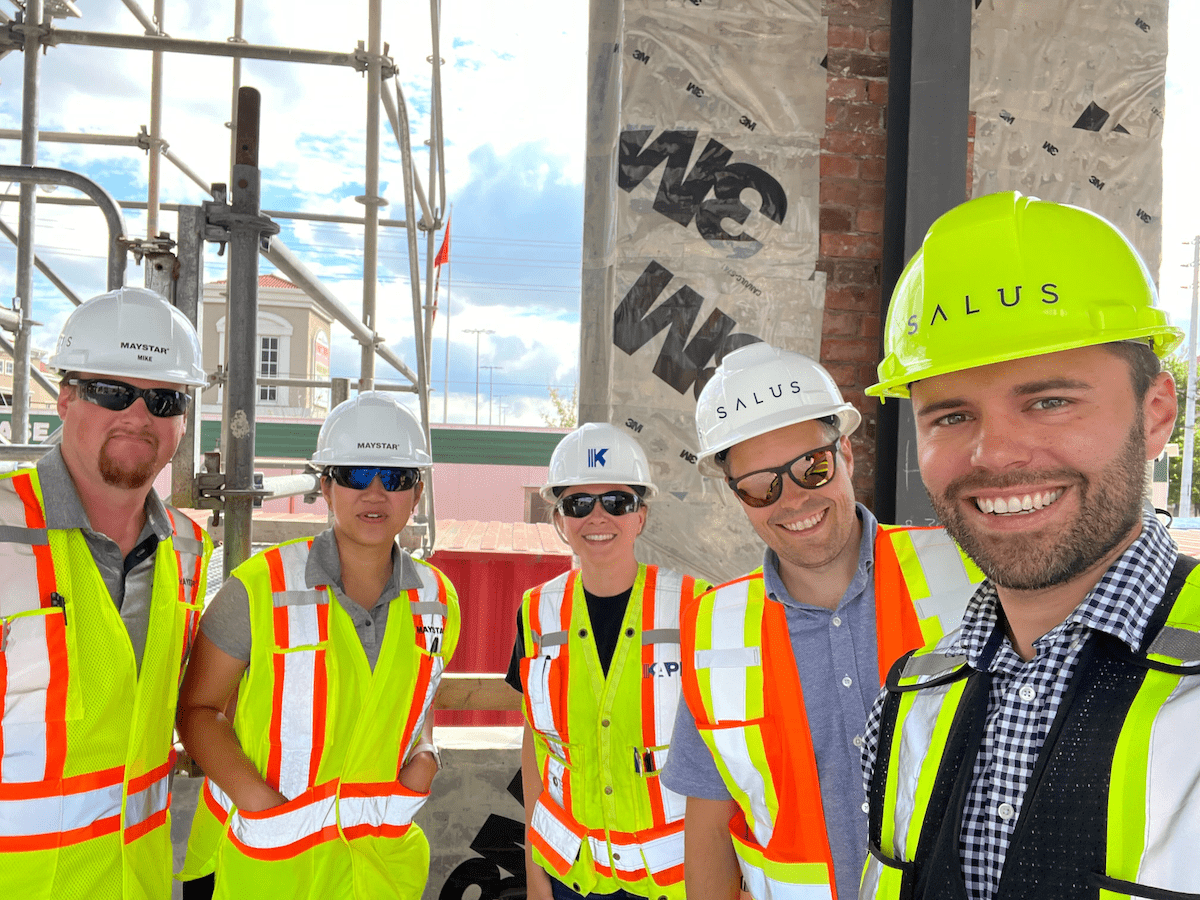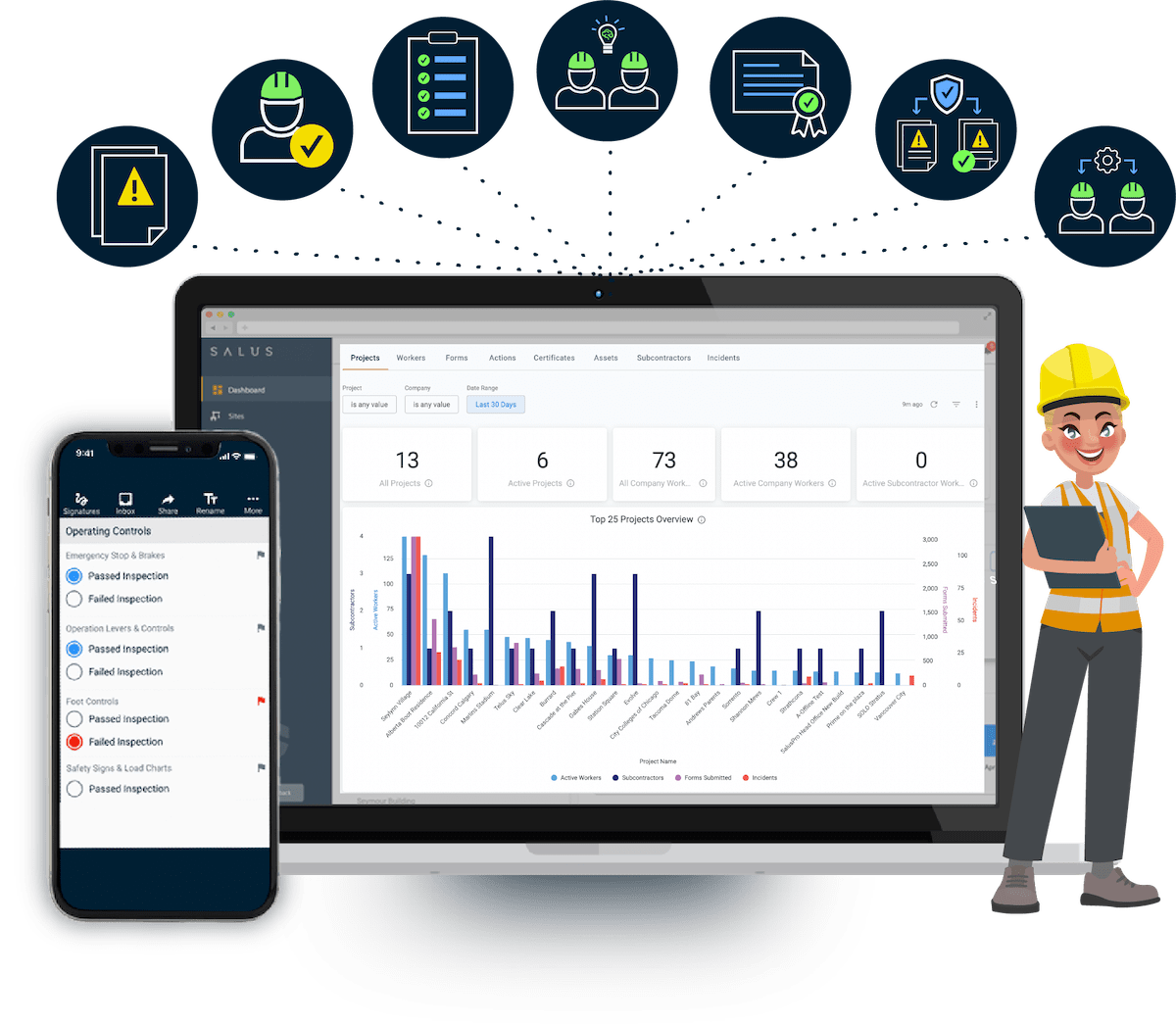SALUS creating ‘metaverse’ for construction health and safety
The tech company wants to help construction businesses be proactive instead of reactive.

SALUS CEO and founder Gabe Guetta never had any grand plans to start a digital health and safety platform for builders. It was born out of necessity.
Right out of high school he worked in construction as a labourer and rose up in the business. At 25 he was running a Metro Vancouver subcontracting business specializing in high rise window installation that employed more than 100 people.
Guetta saw a shift happen around seven years ago when a major shift in compliance happened.
“The companies we were working for were being forced to track a deeper level of compliance,” he said. “They had to prove they were following rules and requirements and prove it by filling out forms. They also were forced to ensure their subs were doing this.”
Overnight Guetta and his team were having to produce and create a safety program as well as daily, weekly and monthly forms proving compliance. This put the company in a reactive state as the entire workforce had to change on a dime.

“The legal ramifications were huge and I always had this anxiety around liability,” said Guetta. “We continued in that reactive state for a few years.”
His fears were realized when a 14-foot piece of steel was dropped from the 14th floor of a build onto a pedestrian parking lot. Nobody was hurt, but after an investigation revealed some forms were not properly filled out, Guetta was personally written up.
Better than paper
“We wanted to take that experience, that failure, and elevate the business,” said Guetta. “But I couldn’t find a way to progress in this reactive paper state. That’s where the journey began as we started to look for software.”
The search left Guetta unsatisfied. While site documents and e-compliance existed, he felt that there wasn’t something that was built specifically for construction.
“If you understand the industry, you have to replicate the physical workflows of an individual,” he explained. “If technology can’t do that, paper is more powerful. Can a worker start that form on a laptop then go into the field, share it with other people and work on it together digitally, even out of cell service, finish it, auto-share it with the GC, share so others can sign? If it can’t do that, it is just a roadblock in the physical workflow. It has to be better than paper.”
Guetta worked with SALUS co-founder and full-stack developer Rob Clifford to build a program that digitally replicates the existing hierarchies and workflows of the industry.
“It’s a single source of truth,” he said. “As companies work in the system together and share it allows the natural flow of the industry to happen.”
The team was new to the software as a service industry and it was a momentous task to get started.

“We didn’t know what software as a service (SaaS) meant,” said Guetta. “We didn’t know truly how complex and how much work it was. We just started to climb that mountain. I knew exactly what the industry needed for success and Robbie knew how to build it.”
The first priority was field adoption from workers so the team started with a mobile app and got it into the hands of crews. This meant making it as easy as possible to access through a web page or even just scanning a QR code.
“A worker’s job is to go from point ‘a’ and ‘b’ to build something,” said Guetta. “If we stop them and don’t adapt to their natural flow or make it more efficient, we are losing. You have to get into the trenches and build a product from the eyes of the industry from their side of the fence.”
Collaboration gone digital
Projects are a team effort and Guetta explained that while building SALUS, the team knew that it would have to be able to function in a collaborative environment.
“You can’t just run one thing, you have to pull it all together in a cohesive way,” he said. “First we built an architecture that maps out the workflows and hierarchies. It allows us to replicate the physical workflow so well that adoption is elevated. Then you pull all feature sets into one platform for health and safety and from that point you can connect companies together.”
This means that if a general contractors has subs and thos subs have subs, you can connect them.
“In our platform it’s all interconnected,” he said. “It connects to existing profiles, maps out the hierarchy, creating almost a metaverse. We aren’t revolutionizing anything. We are just putting this all into a digital space.”
Guetta believes that digitizing this creates the opportunity for the entire construction community to be more collaborative when it comes to keeping workers and the public safe.

He imagines a scenario where all of Vancouver is connected to SALUS. The community could know that a truck driver is carrying a hazardous load. The entire metaverse knows it’s happening and the safest route can be determined. Nearby sites can be notified.
“Imagine what can happen if there is more collaboration, if we know where high risk activities are on a dashboard,” he said. “Now you aren’t being reactive. You are proactive.”
Guetta also believes that the data generated from SALUS could be used to identify trends and emerging risks that could be dealt with before a serious incident occurs. However he stressed that it would be done in such a way that personal information regarding workers and companies is hidden.
Guetta said SALUS has worked with more than 1,800 companies across North America and Australia and in the coming year intends to focus on Canada and the U.S.
“We have so much more room to innovate and as we are doing that we are listening,” said Guetta. “The future is SALUS is truly allowing an industry to come together and solve health and safety problems in a collaborative environment and not a competitive one.”
